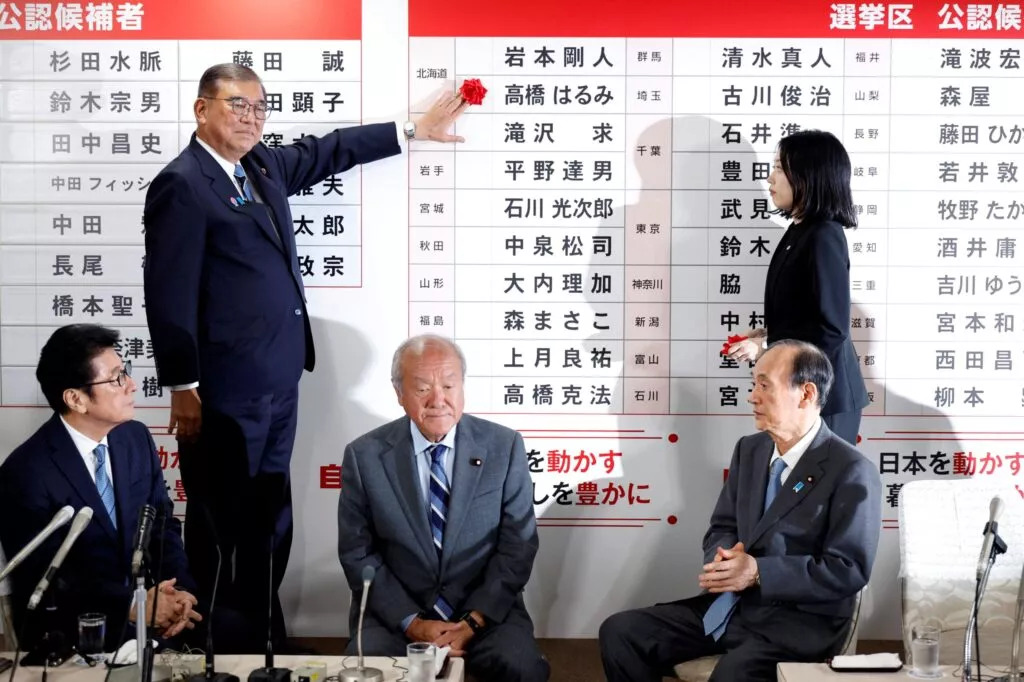The results of the election in Japan’s House of Councillors highlight a key trend: An era of political fragmentation in Japanese party politics has arrived, and populist political forces are growing.

In the recent election for the 27th House of Councillors in Japan, the ruling coalition — the Liberal Democratic Party and Komeito — suffered a major defeat. The LDP lost 13 seats, finishing with 39, while Komeito managed just eight. This marks the second consecutive setback for the LDP after losing its majority in the 2024 House of Representatives vote.
The LDP’s loss of its majority in both chambers is unprecedented — a tough reality it must face as it ushers in its 70th anniversary year. Although the upper house wields less constitutional power than the lower house, the election has drawn intense scrutiny because it serves as a key barometer of Japan’s political trajectory. Two trends stand out: first, the unmistakable fragmentation of party politics in Japan; second, the rise of populism, which is reshaping the Japan’s political landscape.
First and foremost, the consecutive electoral defeats suffered by the Shigeru Ishiba administration mark the end of the LDP’s one-party dominance, which emerged after Shinzo Abe’s return to power in late 2012. Japan is now in the throes of political fragmentation: In this election, the LDP managed to secure 39 seats, while the main opposition Constitutional Democratic Party won 22. The Democratic Party for the People claimed 17 seats and the Reiwa Shinsengumi took 14.
The transition from LDP dominance to multiparty coexistence means that a new norm has taken shape in which the ruling party needs to engage in frequent consultations and negotiations with opposition parties in order to pass legislation in the Diet.
In the realm of foreign policy, this shift could give rise to a phenomenon known as “policy drift,” where decisions are delayed due to the need to accommodate the diverse views of various parties. For example, the Japan-U.S. tariff negotiations will be directly impacted. Even though Prime Minister Ishiba has expressed his intent to hold direct talks with the president of the United States so that an agreement can be reached swiftly, eight rounds of ministerial-level trade talks have already taken place without any tangible progress. Given the precarious domestic political footing of the Ishiba government, doubt remains about its ability to achieve a breakthrough in the negotiations.
During Abe’s tenure, Japan was able to overcome domestic opposition from powerful interest groups such as agriculture others to conclude multiple trade agreements, including the Japan-U.S. Trade Agreement and the Comprehensive and Progressive Agreement for Trans-Pacific Partnership, or CPTPP. It owed much to the solid political foundation that the LDP under Abe enjoyed.
But the return of Donald Trump to the White House has brought uncertainty to Japan. Now the U.S. is facing a Japan that is grappling with a decline in predictability not unlike its own situation. Although the overarching framework of the U.S.-Japan alliance is unlikely to change fundamentally in the short term, the growing uncertainty on both sides poses a significant challenge to the effective management of the alliance.
Second, the most notable development in the recent election was the rise of the Reiwa Shinsengumi. It gained popularity by advocating xenophobic and anti-globalization stances, shattering the myth that Japanese politics is free from populism. Established only five years ago, the Reiwa Shinsengumi now has 75,000 members and supporters nationwide and has fielded candidates in all 45 electoral districts. Its slogan, “Japan first” calls for firm resistance to alleged foreign interference and tightened immigration controls.
While it’s not the first time Japan has seen radical conservative parties emerge in the post-Cold War era, most were short-lived. What sets this instance apart is that it’s happening on a background of economic weakening and a steady decline in middle-class living standards. These troubles are compounded by external factors, such as Trump’s “America first” policy, leading voters to express dissatisfaction with mainstream politics.
The rise of populism in Japan may squeeze out centrist politics and potentially lead to a shift in the ruling party’s China policy — to become more hawkish — which could impact bilateral relations, although the likelihood that populists will become part of the ruling coalition is slim. Populist parties face a dilemma: They must maintain radical stances to appeal to core conservative voters, but this makes it difficult for other parties to embrace them as coalition partners.
In this election, voters in their 20s predominantly supported the DPFP; those in their 30s and 40s mostly voted for the Reiwa Shinsengumi; and voters over 60 primarily supported the LDP and, to a lesser extent, the CDP. This reflects the fact the main splits in Japanese society stem from intergenerational disparities in the burdens of pensions and healthcare, with working-age people shouldering the costs and the elderly reaping the benefits.
Unlike the social base of populism in the West, which is driven by widening wealth gaps, Japan’s situation is more about generational disparities, which to some extent acts as a check on overly hawkish China policies
Japan has arrived at a pivotal moment in its political evolution. Its diplomacy will increasingly hinge on the understanding and support of domestic society. In the context of China-U.S.-Japan relations, the need to fortify the social underpinnings of these relationships will grow ever more critical.
